TESTED: STARK VARG ELECTRIC MX BIKE
New motorcycles are fascinating. At least, I think they are – especially when they come with new technology and innovative designs. And that’s probably got a lot to do with why I’ve now been attending media launches for new-model motorcycles for the best part of 25 years.
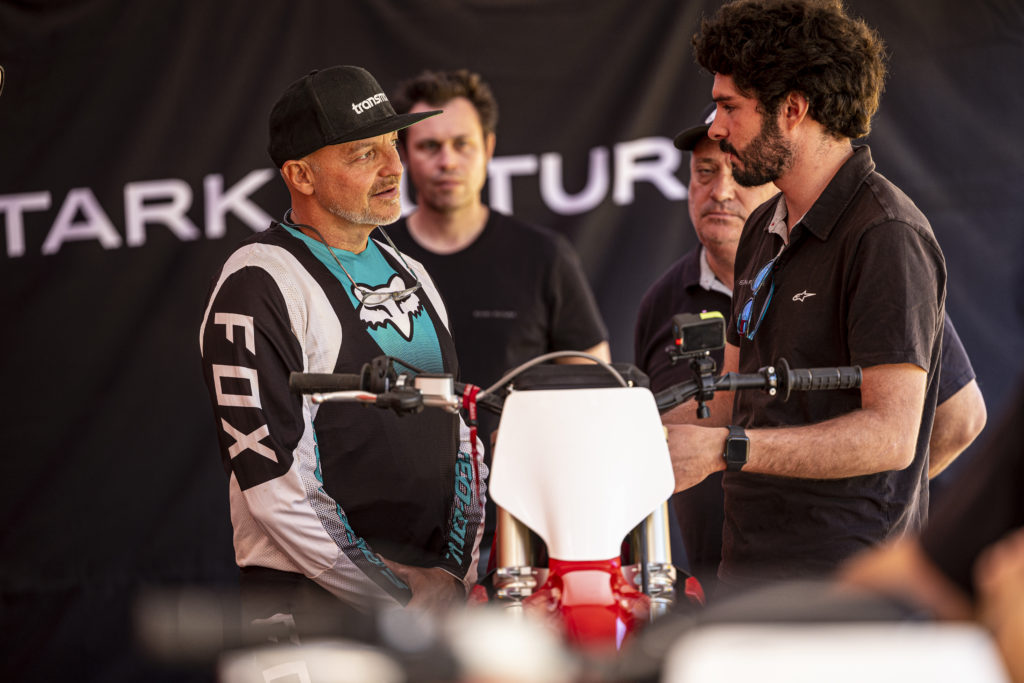
But I’ve got to say that the international media launch for the Stark Varg – held over a two-week window in Spain in late May – always promised to be something memorable. Sure, that’s primarily because this all-new machine is powered by electric technology, rather than an internal combustion engine, but also because the Stark Varg is the first electric-powered MX bike that claims to not only match, but upstage, the performance of the existing players in the MX market. That, and the fact the bike comes with a claimed 80hp, top-shelf Kayaba suspension, high-quality component spec, and a bunch of innovative design elements, and because it has already prompted more than 11,000 people to lay down a $100USD deposit on the thing!
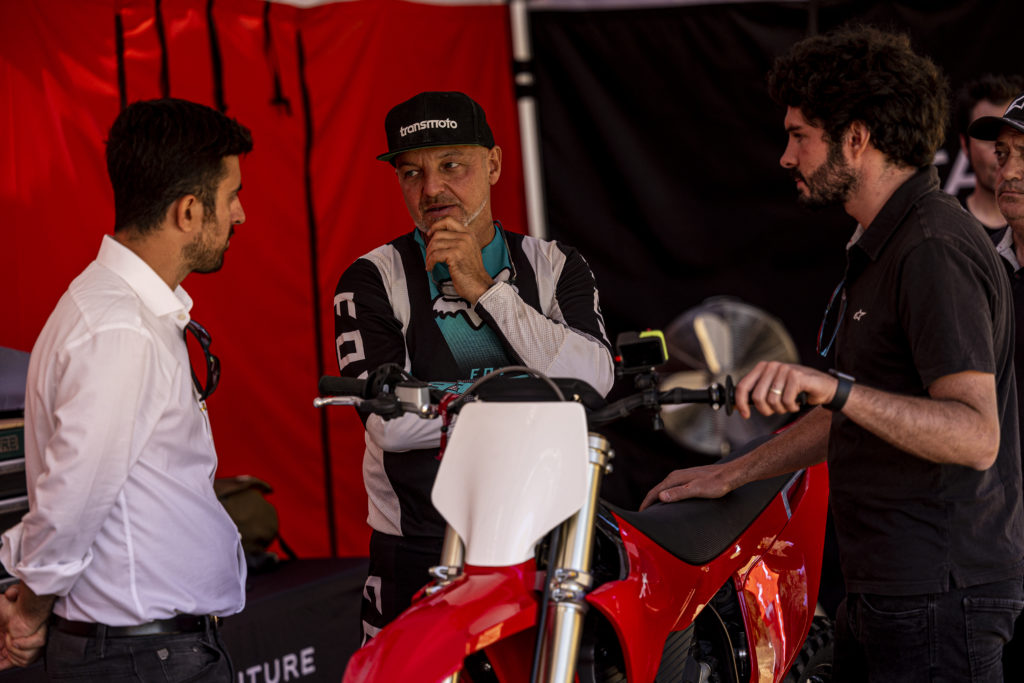
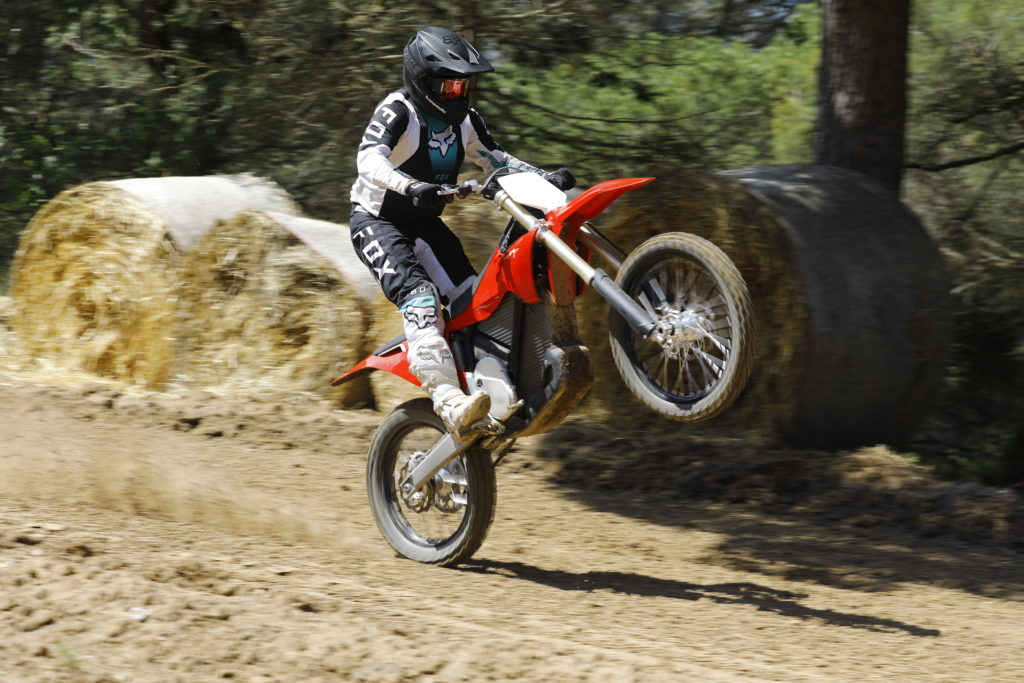
“Irrespective of which side of the electric fence you currently sit, you can’t deny that the Stark Varg has engaged people in a way that few motorcycles before it ever have.”
Ever since the Stark Varg (Swedish for “Strong Wolf”) was launched to the world via Stark Future’s slick promotional video back in mid December, there’s been a mountain of opinion offered about the bike – both positive and negative. But irrespective of which side of the electric fence you currently sit, you can’t deny that this machine has engaged people in a way that few motorcycles before it ever have.
So, seeing as I’ve fielded an unprecedented number of questions about the Stark Varg – from mates, industry crew, family members and, incredibly, people not even involved with dirt bikes – I figured I’d try to answer a bunch of those FAQs as best I can. Here goes…
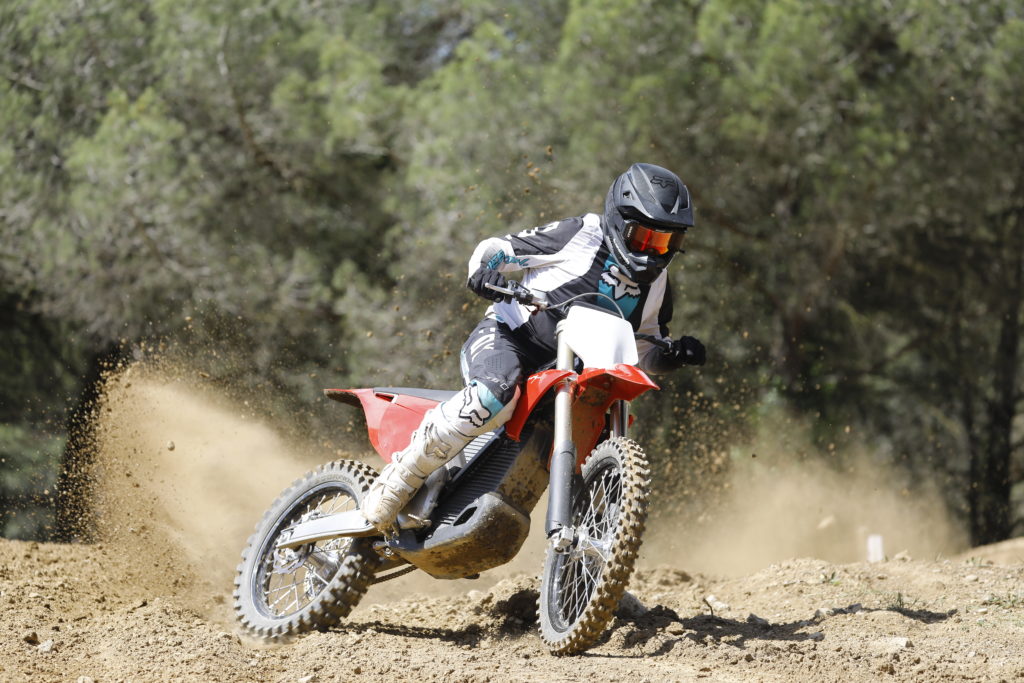
When you see the Stark Varg in the flesh, what first strikes you about the machine?
Its uniqueness and minimalist aesthetic are the first things that strike you. That and its beautiful, slim but curvaceous lines. Put it this way: if I woke up next to a Stark, I wouldn’t kick it out of bed. Every single component on the bike screams premium and looks like it’s been subjected to a “can-it-be-done-better?” design philosophy. With no fuel tank, no radiators, no exhaust and no air inlet tracts to constrain the design of the ergos, the bodywork is not only symmetrical, but much slimmer than a conventional MX bike – particularly the shrouds, which are only just wide enough for the lower triple clamp to clear at full lock. The 32kg V-shaped battery and electric motor (which are structural members of the frame) continue that minimalist theme, and are couched by an ingenious dual-compound hard-plastic skidplate that ‘floats’ on a layer of high-density foam. The handlebars are similarly uncluttered – the oversized bar pad houses the smartphone (with an app used to alter power characteristics), but there’s no clutch, no throttle cables and no electric start. Inevitably, your eye gets drawn to the bespoke carbon fibre ‘neck’ that sits between the headstem and seat (it looks like a high-end granite benchtop with an inlaid gold Stark insignia), from where two channels duct air under the bodywork and seat toward the small radiator (that sits under the rear of the seat). All that said, the bike is pretty conventional in terms of its overall size and chassis geometry, and its bar/footpeg/seat triangle.
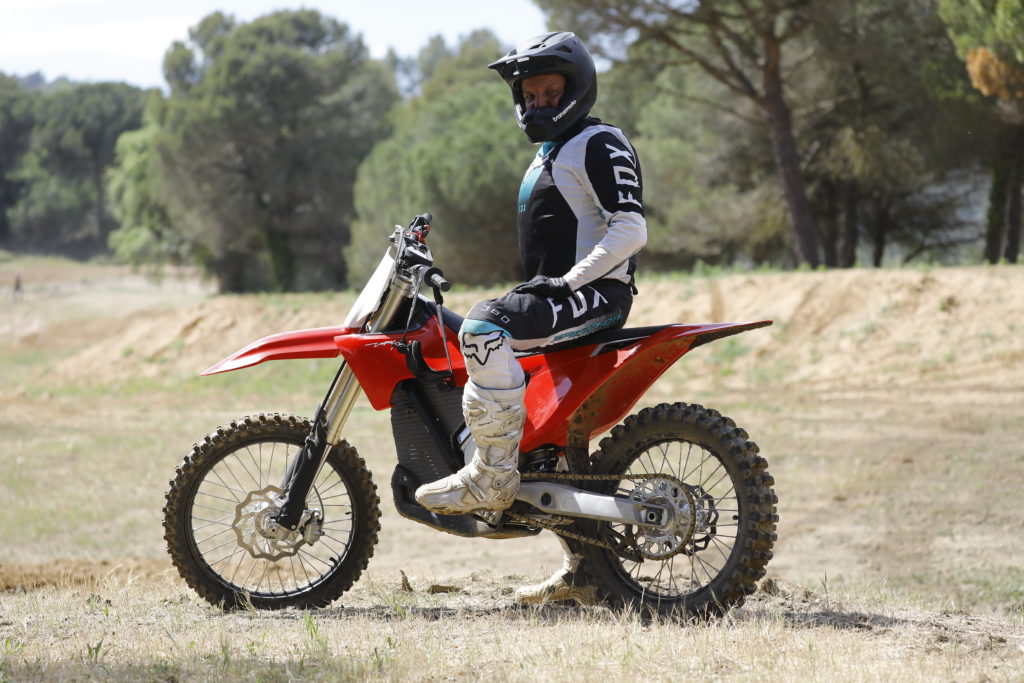
Did you test a prototype or full production bike?
According to the Stark Future guys, the five bikes used on rotation at the international media launch were somewhere between the prototype and final production bikes. They came with 60hp, not 80. The plastics were somewhat brittle 3D-printed specimens, rather than the conventional plastics that’ll appear on the production bike. The test bikes were also about 3-5kg heavier than the expected 110kg weight for the production unit (mainly due to weight savings in the battery when robots, not humans, glue the 400 battery cells in place). And the bar-mounted smartphone functionality was in ‘Beta’ mode (still under development) – meaning the ability to adjust the power output and other settings (traction control, engine braking and virtual flywheel weight) had to be left to the Stark technicians.
“The bike’s chassis is really well-balanced front to rear, and with no big reciprocating masses in its powerplant, it delivers next-level agility and very neutral-feeling handling.”
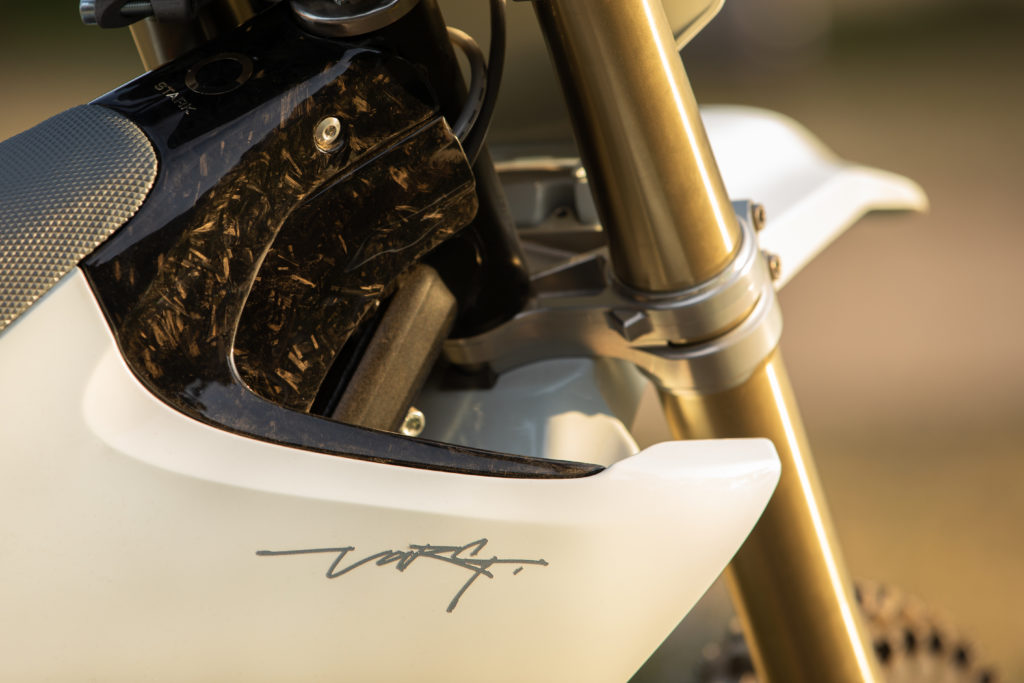
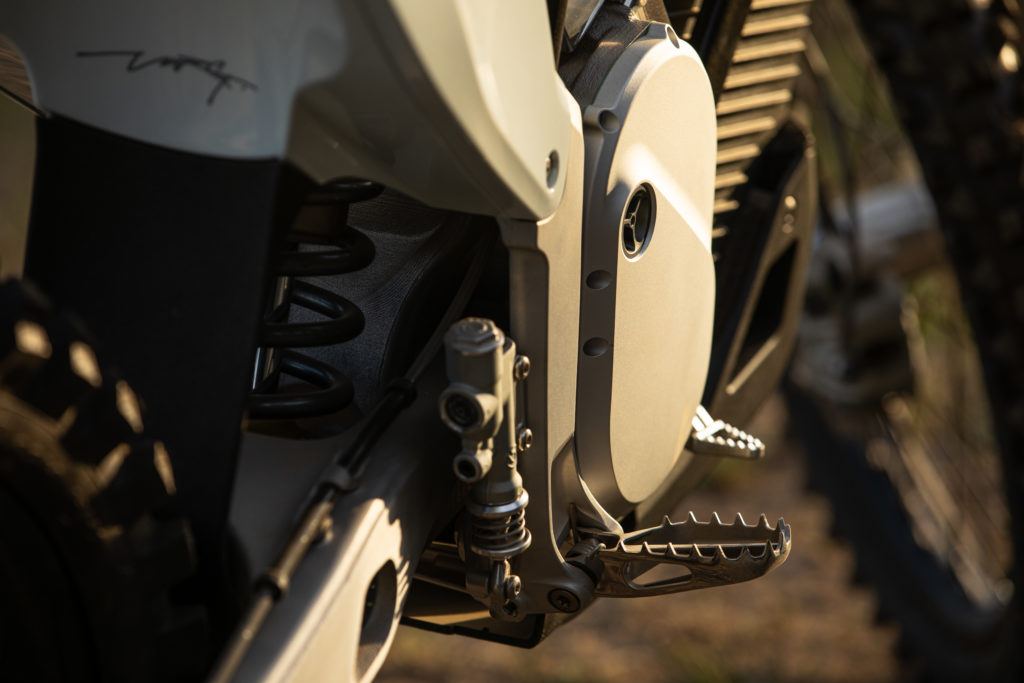
What’s the thing’s component spec like?
Just as good, or better, than any existing production MX bike. For example, it runs a Kayaba fork and shock (tuned in collaboration with Technical Touch), split-design 7075 T6 forged triple clamps, CNC-machined 6082 T6 alloy hubs, 7050 T6 rims, 7000-grade alloy subframe, Brembo brakes with Galfer discs, and tapered alloy bars. Its cast stainless steel footpegs are claimed to be the strongest on the market, plus they’re super-easy to mount and a special recess in the frame lets them hinge up much farther than conventional pegs when scraping in deep ruts. Then there’s the ingenious use of a clicker system to adjust the rear axle position and chain tension, the flush rear axle nut design, and the chain guide that mounts with two vertical bolts (like a radially-mounted brake calliper), rather than onto alloy tabs welded to the swingarm. Interestingly, the entire bodywork and seat all come off in one unit (this requires the removal of seven bolts).
“The Stark engages your senses in an entirely different way. It’s a much more immersive experience because, instead of having your senses numbed by vibration and engine noise, you’re suddenly acutely aware of your surroundings.”
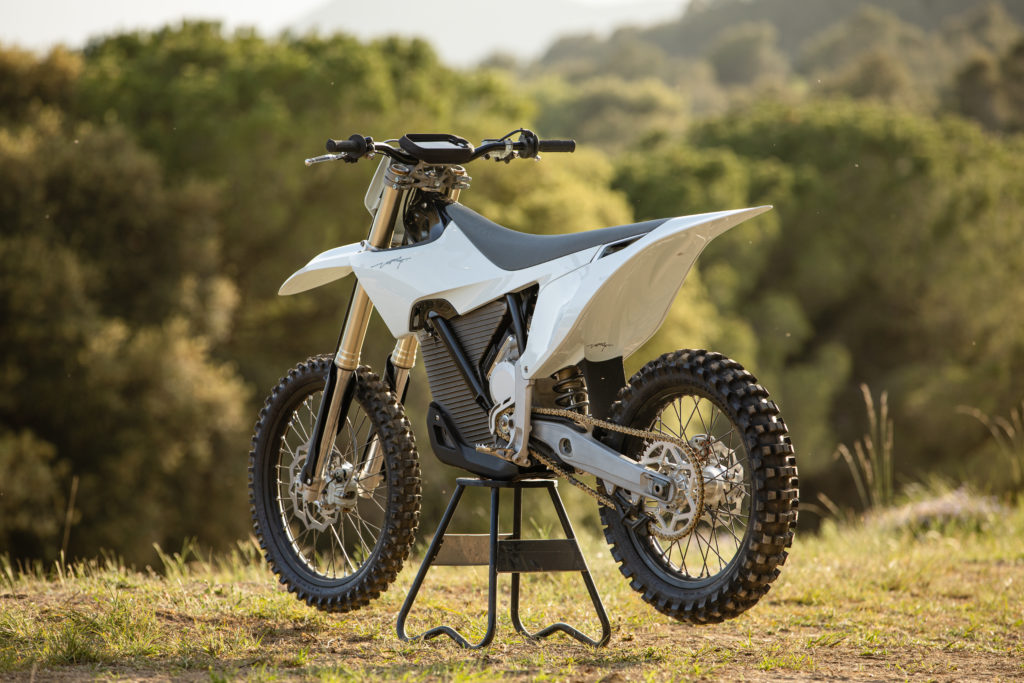
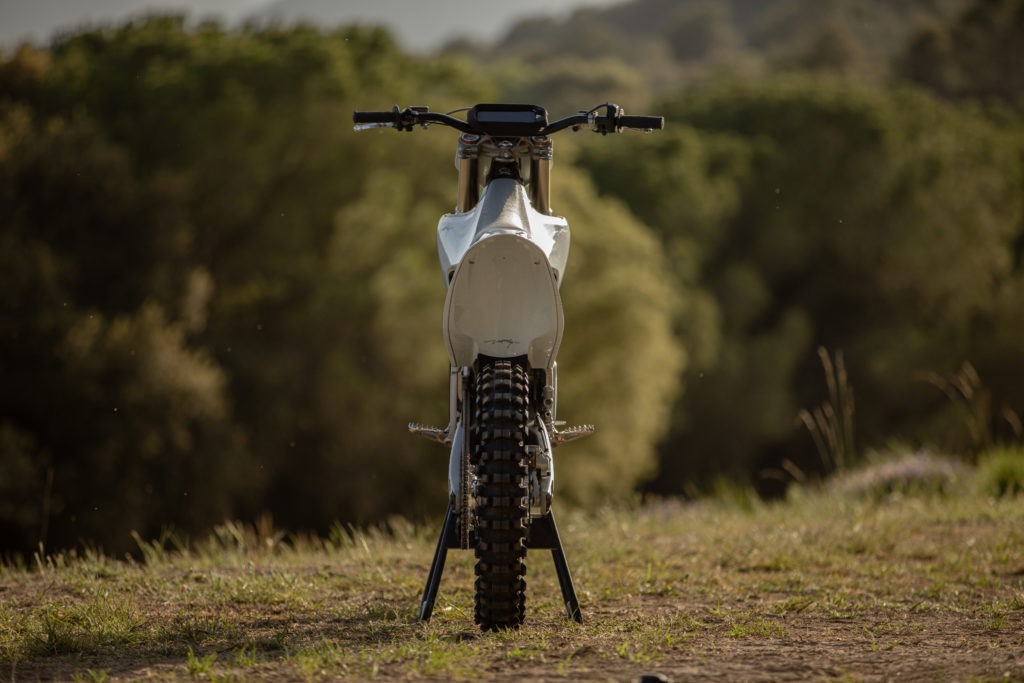
What lubricates and cools the bike’s electric motor?
Fossil fuel is a dirty word for the sustainability-minded Stark guys, by the bike’s electric motor does in fact use oil – though there’s just 90ml of it to lubricate the two gears, and it never needs to be changed as there’s no combustion process to contaminate it. The radiator runs 500ml of fluid and cools the electric motor via a water jacket.
“You’re always in the right ‘gear’ and always at the right revs. And not being busy with gear shifts and clutch use genuinely frees up both your body and mind up to focus on line selection and to simply enjoy the ride.”
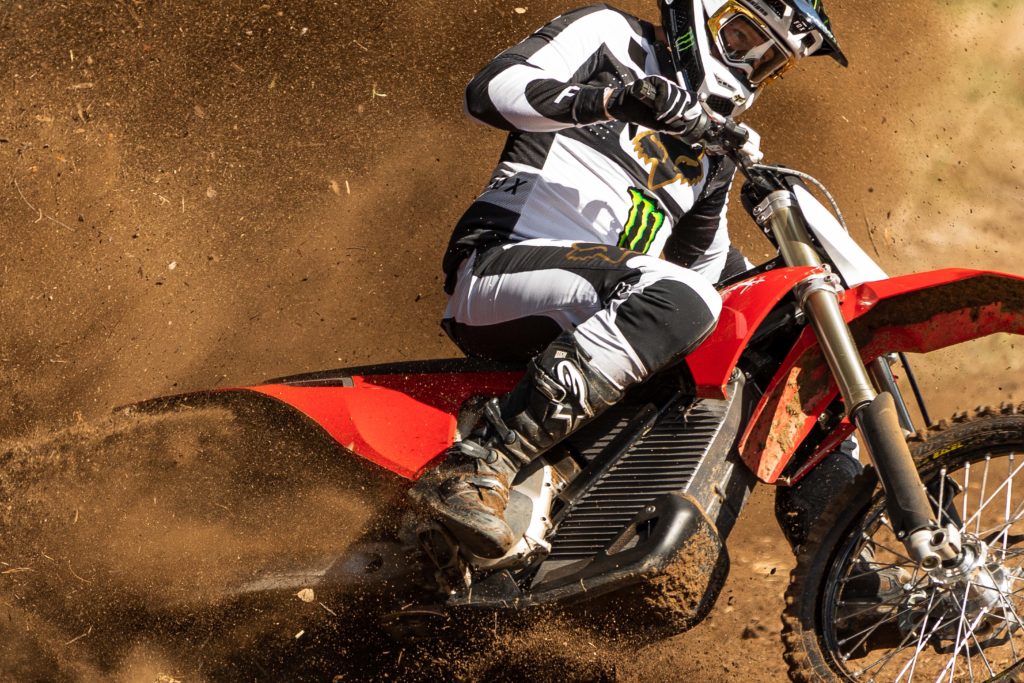
Okay, cut to the chase: what are those first few laps aboard the Stark Varg like?
Memorable … because it’s such an entirely different riding experience compared with a conventional combustion engine-powered bike. And to be honest, those first few laps aren’t about evaluating the bike’s performance; they’re about deprogramming all those things you do without thinking on a motorcycle.
“Through corners, the Stark transitions seamlessly from braking to turn-in to acceleration. There’s no hobby-horsing and no obvious shift in load from front to rear wheels. It just remains stable, planted and super-composed, and that gives you the confidence to dial the power on much earlier.”
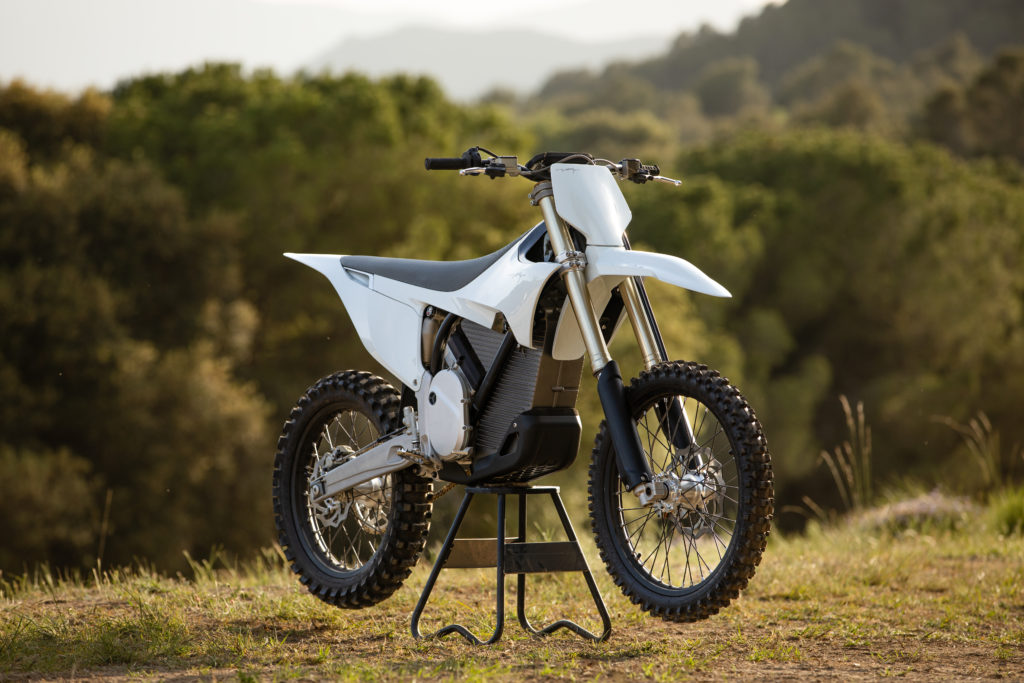
As there’s next to no noise coming from its electric motor, the Stark engages your senses in an entirely different way. It’s a much more immersive experience because, instead of having your senses numbed by vibration and engine noise, you’re suddenly acutely aware of your surroundings. And that includes the scrunching-rubber noise your rear tyre makes as it claws for mechanical grip (like everyone at the launch, I stopped after a few corners thinking the rear tyre was flat!).
“The throttle-position-to-power-delivery algorithm is so good, it feels like the rear wheel is hard-wired to your brainstem!”
Also, there are no RPMs to gauge your speed in a particular gear, so it’s initially difficult to judge the speed required to clear jumps. But after half a dozen laps – which is what it took to get accustomed to judging speed visually, not aurally, and to stop phantom-grabbing the non-existent clutch and gear-shifter – I started to get a feel for the bike’s personality. Here are the primary things that jumped out at me:
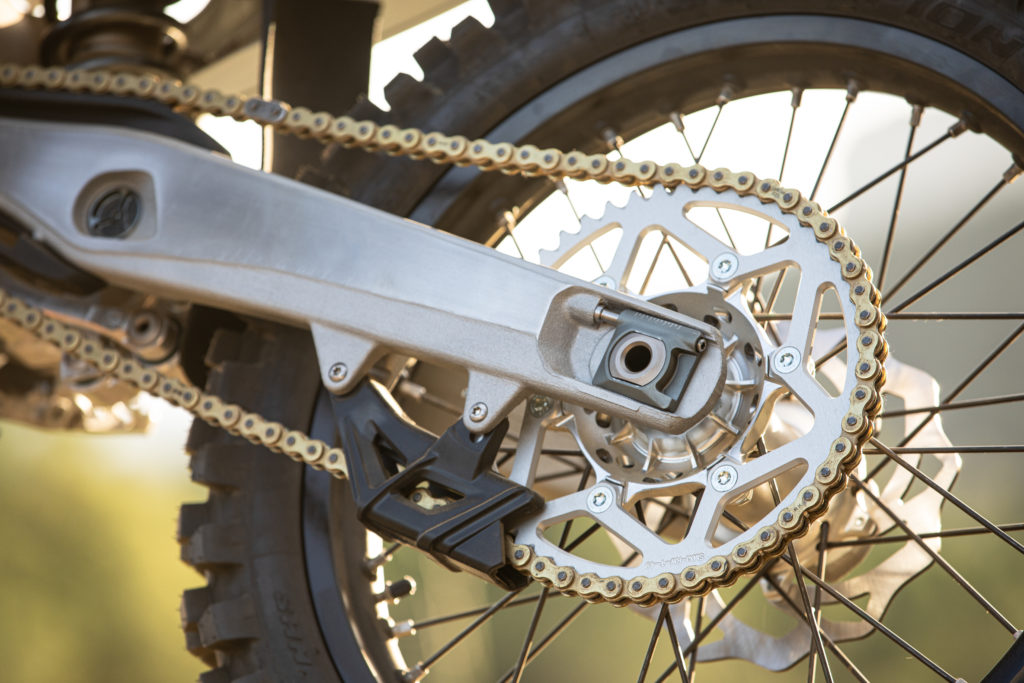
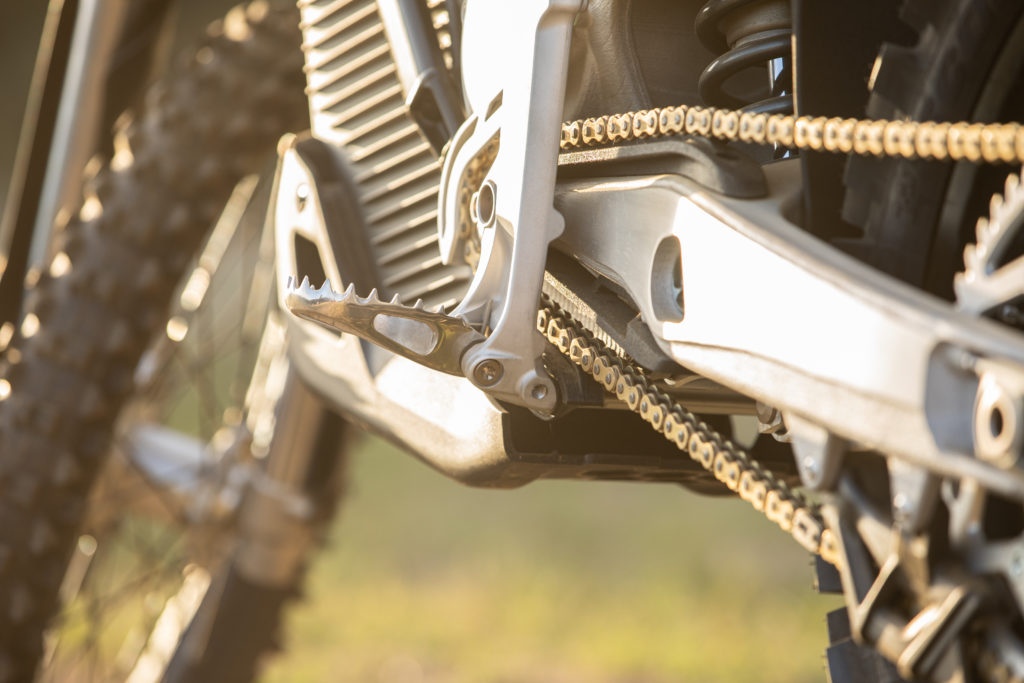
- The throttle response is instantaneous, but nothing like the instant-torque, hard-to-dial-on light-switch I was expecting. In fact, quite the opposite; the power is super-easy to modulate. It comes on so smoothly and so progressively, the rear wheel just hooks up and drives. The throttle-position-to-power-delivery algorithm is so good, it feels like the rear wheel is hard-wired to your brainstem! You can dawdle around the pits at walking pace without the slightest jerkiness in the power delivery, and then unleash the beast once you’re out on the track.
- As your left hand and foot has nothing to do but grip the bike (I ran a conventional rear brake pedal, not the bar-mounted lever option), you’re always in the right ‘gear’ and always at the right revs. And not being busy with gear shifts and clutch use genuinely frees up both your body and mind up to focus on line selection and to simply enjoy the ride. And on the launch’s jump-littered track, that was a big advantage for me. According to the guys who used the bar-mounted rear brake, being able to stand with the balls of their feet on the pegs (and not reach for the rear brake pedal) was also a huge advantage because they never had to compromise the optimal riding position.
- The bike’s chassis is really well-balanced front to rear, and with no big reciprocating masses in its powerplant, it delivers next-level agility and very neutral-feeling handling. There’s no engine inertia to make the bike want to stand up as soon you dial the power on, meaning you can throw the bike into inside lines and ruts with all the confidence in the world that it’ll stick.
- Through corners, the bike transitions seamlessly from braking to turn-in to acceleration. There’s no hobby-horsing and no obvious shift in load from front to rear wheels. It just remains stable, planted and super-composed, and that gives you the confidence to dial the power on much earlier than you ordinarily would and maintain corner momentum. And, as we’ve come to expect, the Kayaba fork and shock work a treat – whether you’re hitting small square-edged bumps, high-speed sandy rollers and flat-landing a miscued jump.
“The Stark engages your senses in an entirely different way. It’s a much more immersive experience because, instead of having your senses numbed by vibration and engine noise, you’re suddenly acutely aware of your surroundings.”
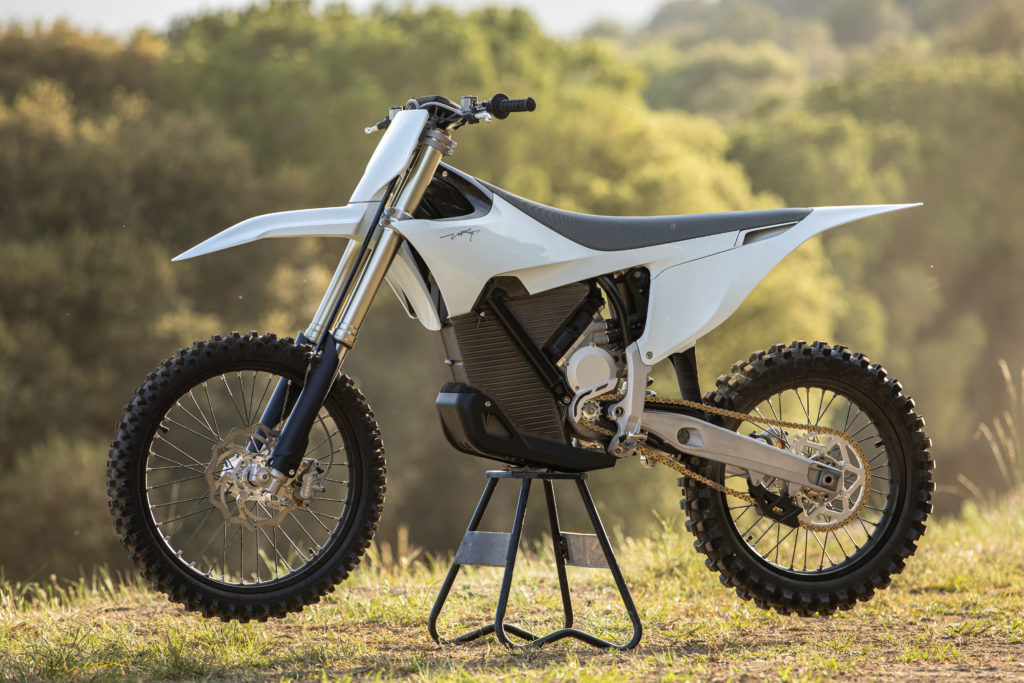
How adjustable is the bike’s power?
Stark boasts that the bike’s power delivery can be varied from a 125cc two-stroke to a 650cc four-stroke with simple adjustments via the bar-mounted smartphone power controller app or VCU (Vehicle Control Unit), which comes with the bike. As mentioned above, this functionality was still a work in progress for the launch bikes (and only adjustable with the help of the Stark technicians on hand). And to be honest, that was disappointing because, to my mind, putting that level of adjustability in the rider’s hands is one of the bike’s most appealing features and I was keen to understand just how user-friendly it was to alter peak power, traction control, engine braking and virtual flywheel weight settings. I did get the technicians to dial down the power output down to 70% for a few laps, but actually didn’t sense a huge difference in the delivery (nor did I feel it was ever lacking). Perhaps that was because I was rarely using 100% of the available power to begin with!
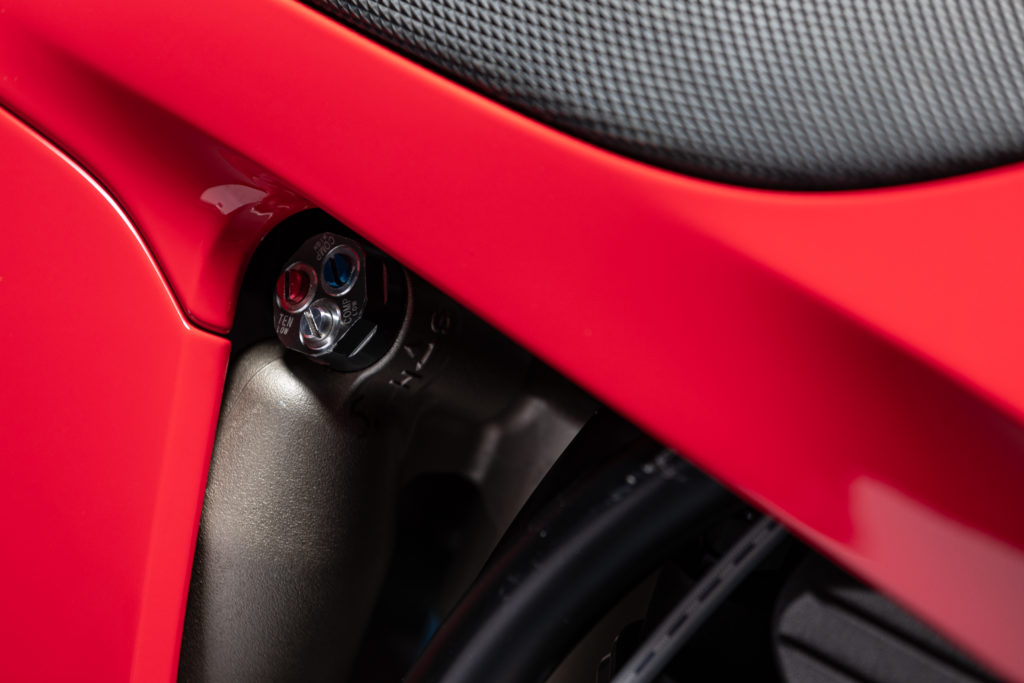
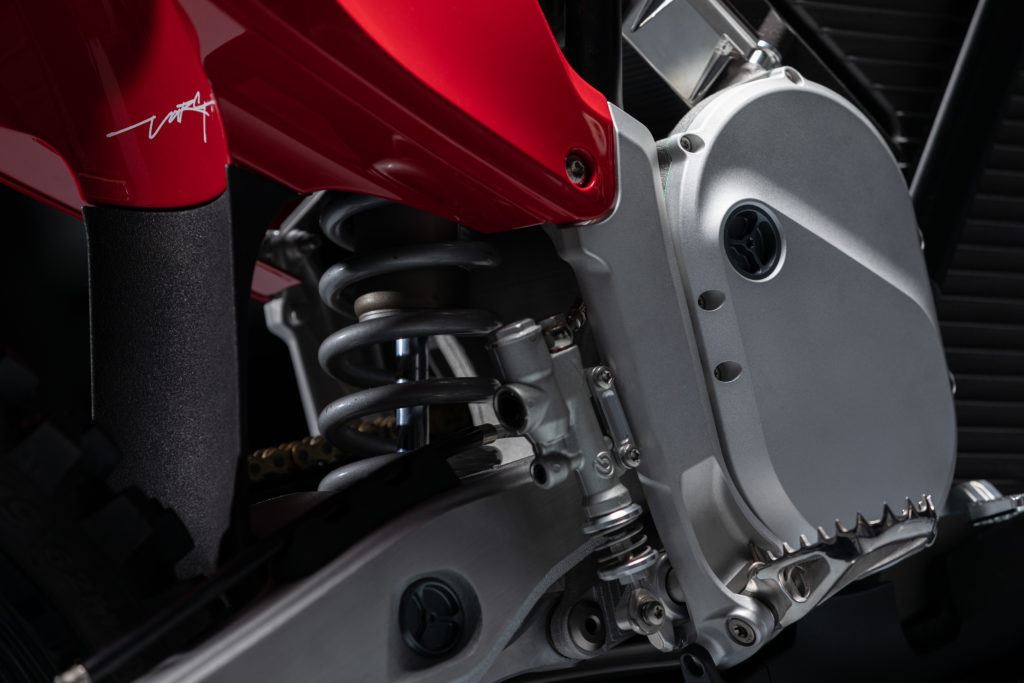
What’s the battery’s range and how long does it take to recharge?
If there’s one facet of electric technology that the masses are routinely sceptical about, it’s battery range (yep, ‘range anxiety’ is a real) and recharging times. So, can I put your minds at ease on this front? No. Not yet anyway. As the Stark technicians put the test bikes on charge each time we came in off the test track, it’s impossible to substantiate the brochure’s claims, meaning we’ll have to take the Stark guys’ word for it for the time being. They claim the bike will last “a full 35-minute moto at GP-like intensity or up to six hours of easy trailriding, with a one- to two-hour recharge”. But when you consider pedal-assist e-bikes already come with technology that allows them to predict battery range for a given pre-programmed route, and adjust power output to suit (once it has ‘learned’ your riding style and habits), it’s not unreasonable to expect that the Stark will soon be able to do the same. Thankfully (and unlike some electric bikes on the market), the Stark Varg comes with its own charger (a 3.3Kw unit that’s incorporated into the alloy static stand, which also comes with the bike).

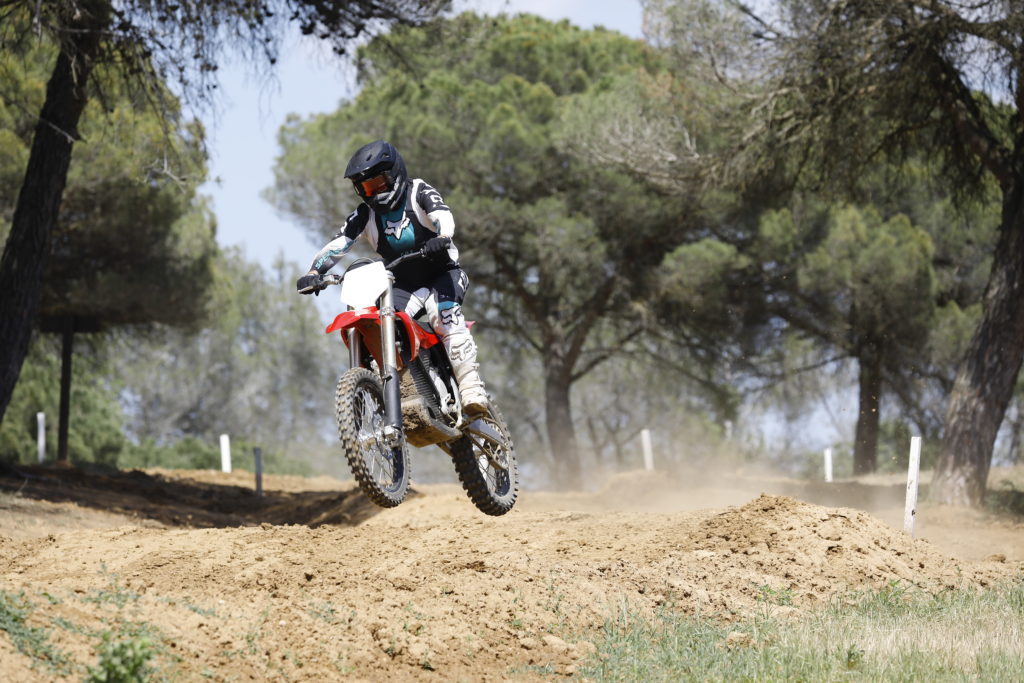
Okay, let’s say I want to share the bike with a mate at a weekend MX meet. And don’t have a couple of hours between our motos. Is the bike’s battery interchangeable? And can you purchase a battery separately?
The battery can be changed/replaced, and the Stark technicians reckon a few of them can complete the job in less than two minutes. That said, with the battery being one of the most expensive components of the bike and a structural component of the frame, Stark don’t anticipate consumers will want to buy a spare battery. According to Stark Future’s Communications and PR Manager, Ben Cobb, “The retail price for the battery is still being defined, but we are looking at between 4000 and 6000 Euros”. Nope, not cheap! Stark is also talking about installing quick-chargers at a selection of high-traffic MX tracks.
“On motocross tracks, the bike is very, very difficult to fault because it marries high-end performance with confidence-inspiring, user-friendly handling and power delivery.”
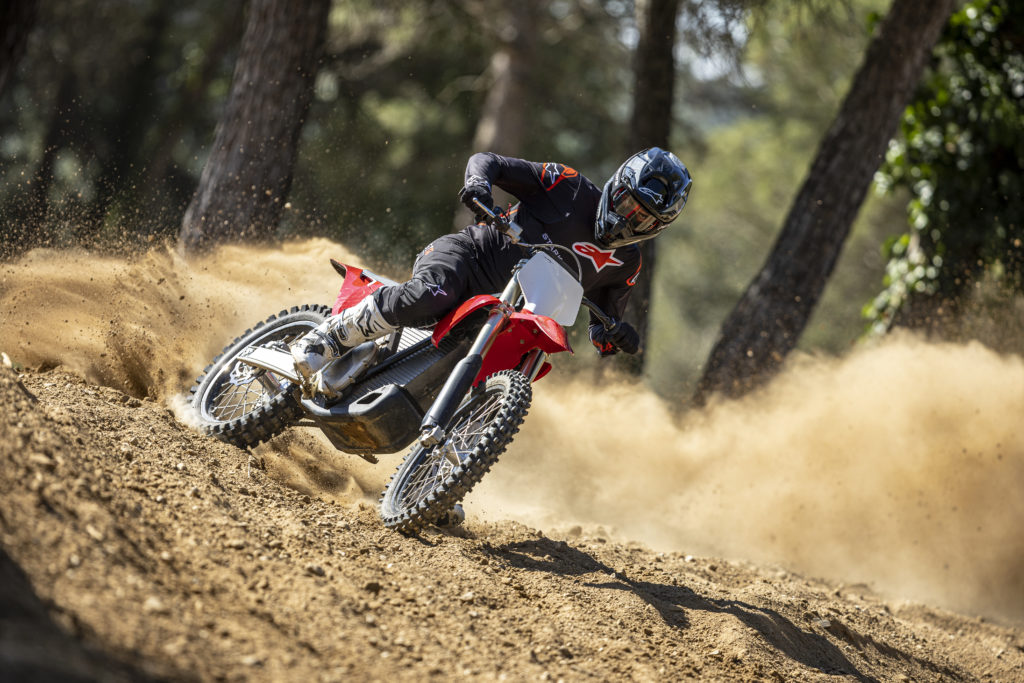
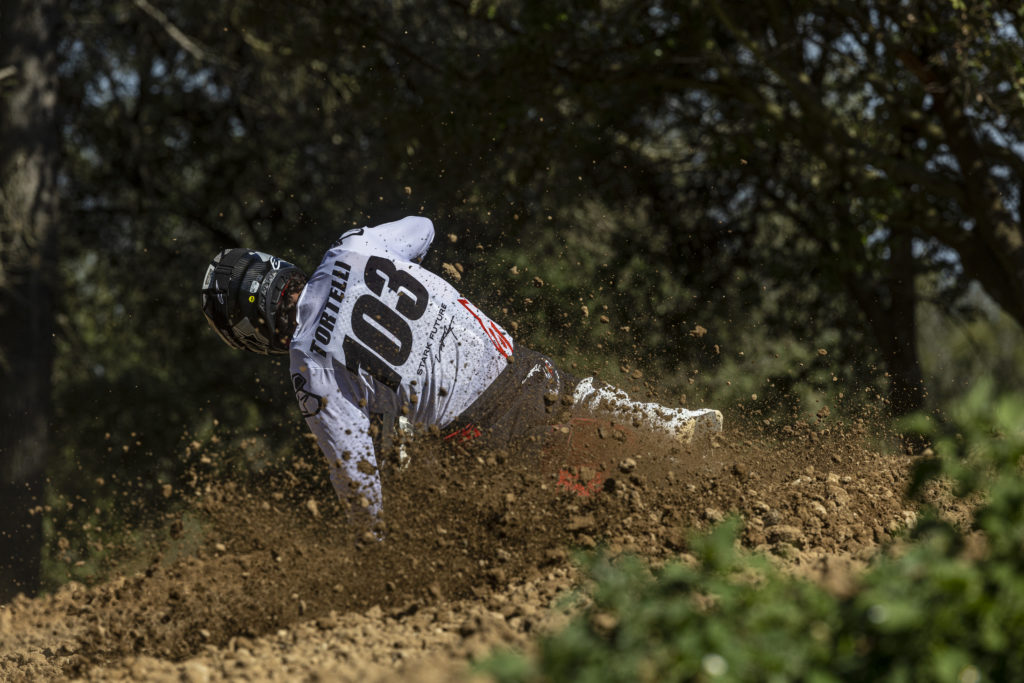
Are there any obvious downsides to the Stark Varg?
On motocross tracks, the bike is very, very difficult to fault because it marries high-end performance with confidence-inspiring, user-friendly handling and power delivery. And no doubt that’s why Stark Future has focused their attention on an MX model to start with. Adapting the machine to off-road applications, however, will likely pose a bigger challenge to the Stark Future engineers. Why do I say that? Well, aside from battery range considerations in remote terrain, it’s near impossible to do a 180-degree trail-spin on the bike. That’s because the bike hooks up and drives rather than breaking traction, and it because it doesn’t have a clutch. I did get the chance to sample the bike in a few off-road sections of terrain adjacent to the MX track and found its combination of easy-to-modulate power and agility worked well on tree-lined trails and loose hillclimbs. What I remain sceptical about is how the bike will deal with technical ruts or square-edged rocky ledges, where you use the clutch almost constantly to finesse the power delivery or adjust the bike’s lean angle in long ruts.
“After buzzing around effortlessly on the Stark, the 450’s vibration and exhaust note – familiar as it was – felt like an assault on the senses.”
What’s the bike’s fastener commonality like?
Pretty damn impressive. Armed with a 13 and 17mm hex-head, and a #25, #35 and #45 Torx bit (all of which come in the epic tool kit that’s supplied with each bike, along with a torque wrench), you can pretty much strip the entire machine. And apparently all bolts on the production bikes will come with torque setting engraved in their heads.
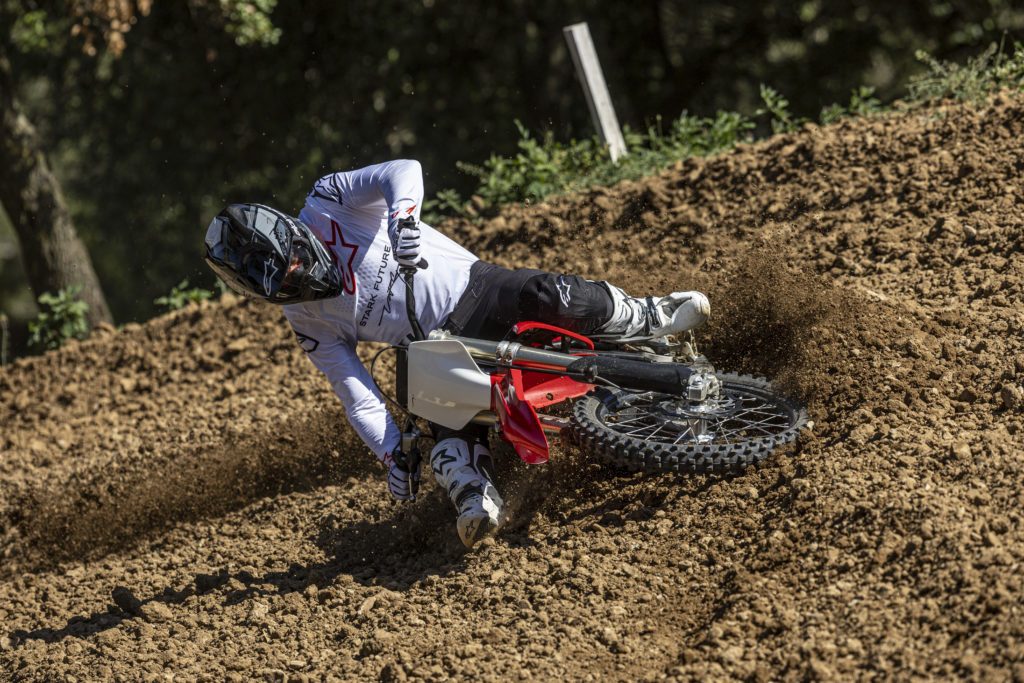
How does the Stark compare with the current crop of combustion-engined 450cc MX bikes?
Knowing most people would ask this question, Stark had a selection of 450s on hand at the launch to give journos the opportunity to do back-to-back tests (you’ve got to love their confidence, right?). After an hour aboard the Stark, jumping on a 450 was an eye-opening experience (I chose the Yamaha because its Kayaba suspension package was almost identical the Stark’s). The first thing I noticed when I fired the YZ450F to life was just how violent it felt. After buzzing around effortlessly on the Stark, the Yami’s vibration and exhaust note – familiar as it was – felt like an assault on the senses. It certainly wasn’t lacking power, but it was much more of a handful to harness around the test track. It required better throttle control to get the rear wheel hooked up and much more effort to manhandle it into ruts and over jumps. All of which meant the thing fatigued me much quicker than the Stark did. Incidentally, that was on a loamy track with plenty of traction. From what some of the other journos tell me – guys who tested the Stark and 450 bikes back-to-back in hardpack conditions – the Stark’s advantages were even more pronounced.
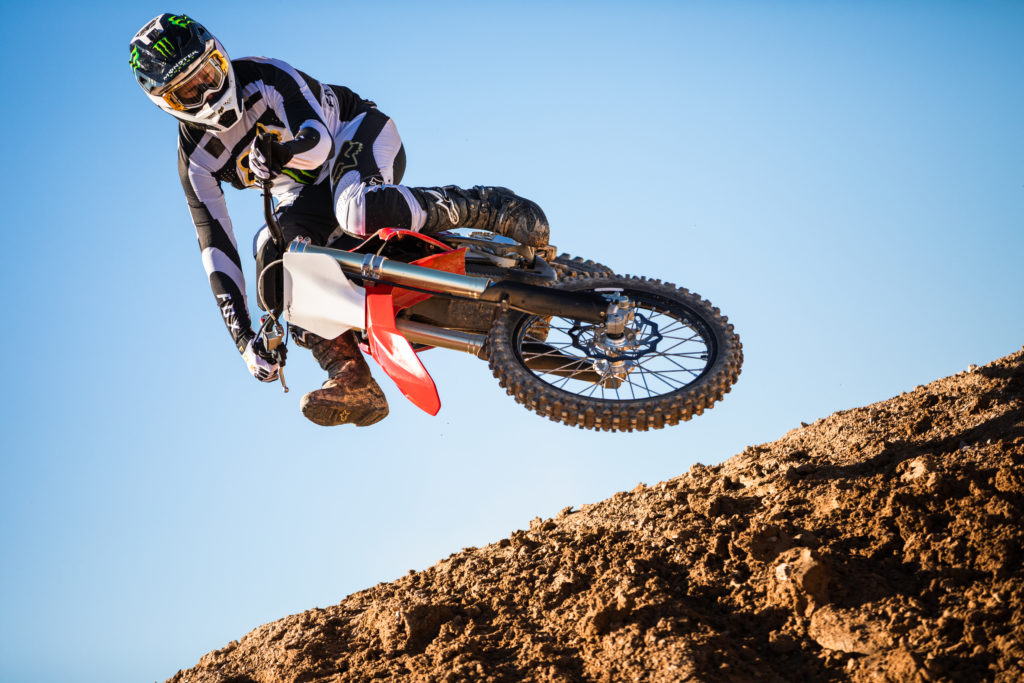
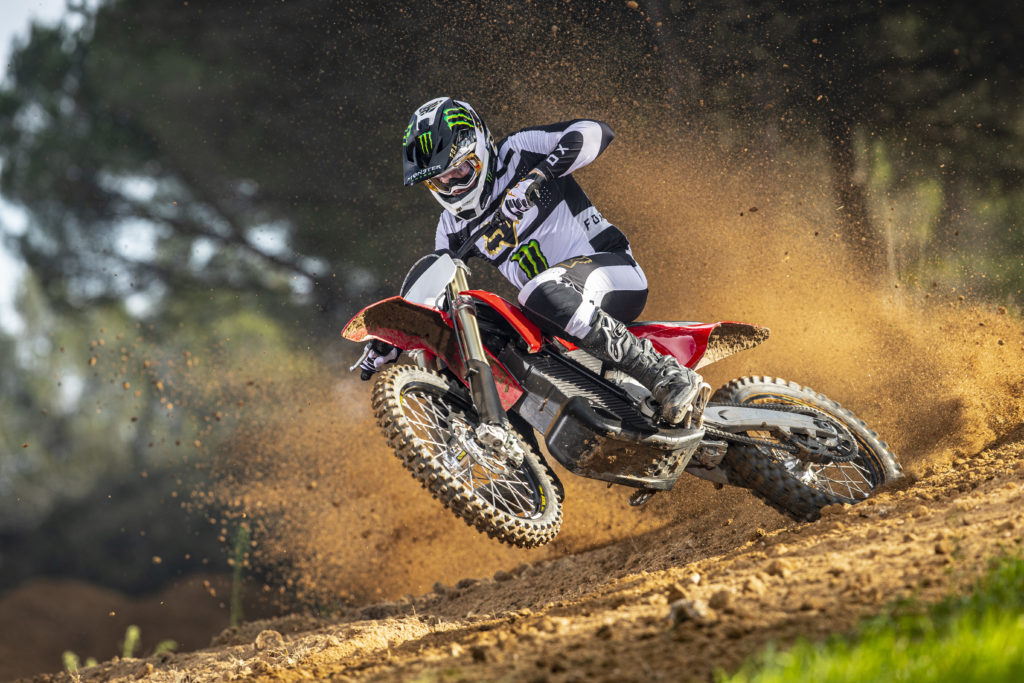
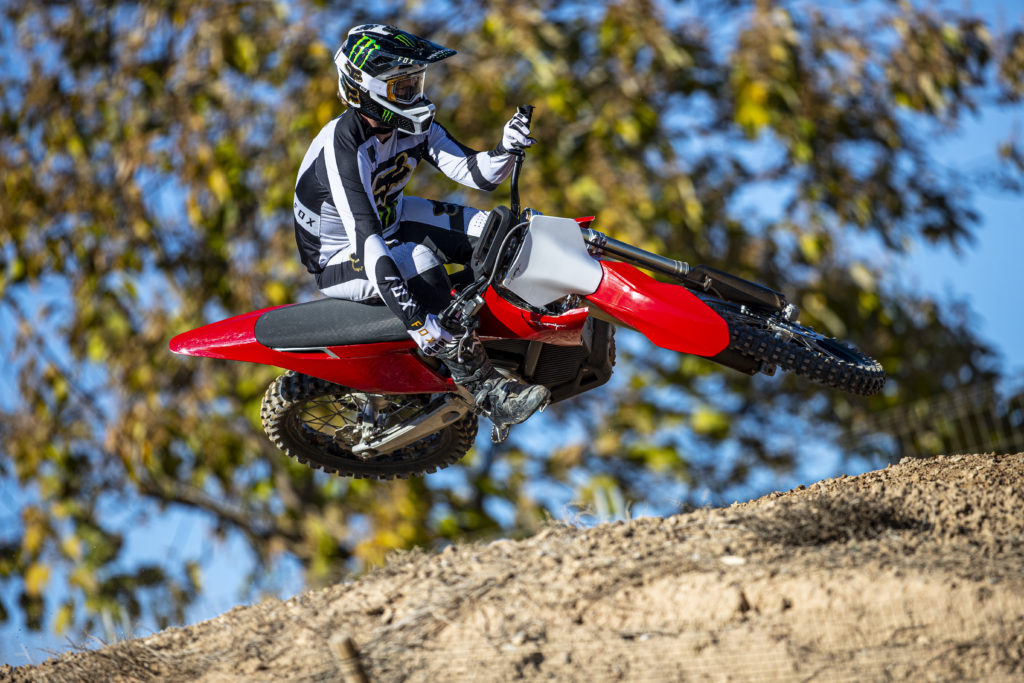
How do the bikes’ lap times compare?
I wasn’t timing myself to the thousandth of a second, and I’m the first to admit that my lap times are pretty inconsistent these days, especially when I’m only clearing about half the jumps on the test track. But the fact remains that my lap times aboard the Stark were routinely a few seconds faster around the test track. Plus, the electric machine was less fatiguing to ride, meaning I could do those lap times for longer. Most of the A-grade or former Pro guys at the launch also reported they were several seconds faster per lap aboard the Stark. What the electric- versus combustion-engine comparo also highlighted was how much less intimidating the e-bike was to ride. In fact, it’s so intuitive and user-friendly, I’m confident that my chick (who’s only motorcycle experience is a few trips to a supermarket in Bali aboard a moped) could have jumped on the thing and done a lap of the test track (albeit without hitting any jumps). If she were to try the same thing on a 450 … there’s no chance she’d get around more than a couple of turns.
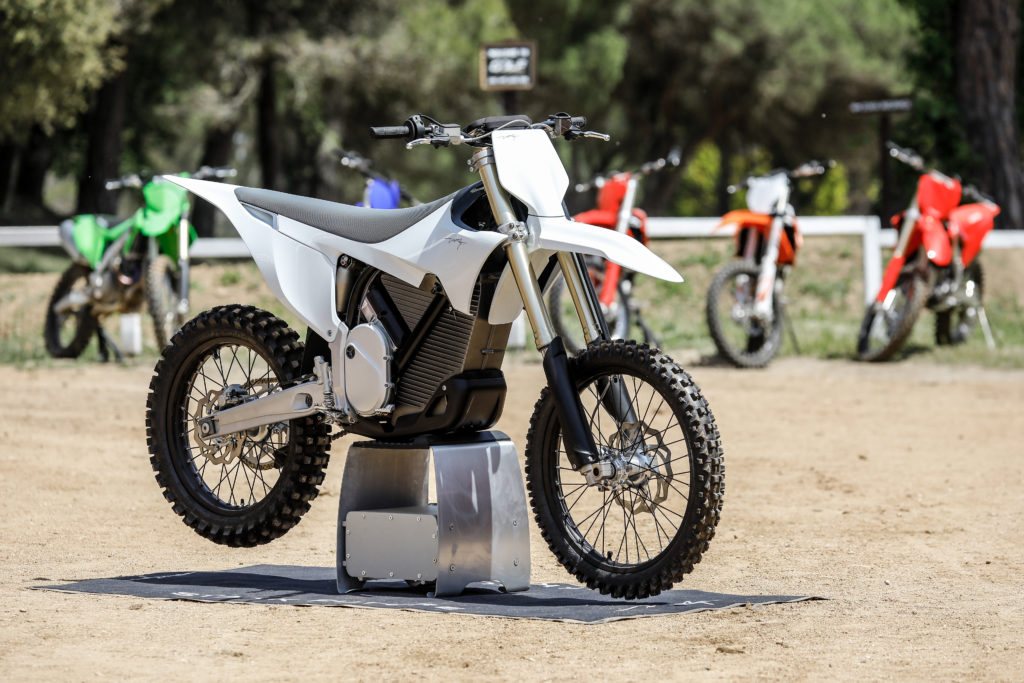
What’s the Stark Varg cost? And how does that compare with a 450cc MX bike?
Try the excercise yourself on the Stark website, and see how the price changes according to the set-up options you choose. Currently, the “Standard” 60hp model will cost you $18,200 AUD. If you go for full-blooded “Alpha” version with 80hp, it’ll cost you $19,600 AUD. And both have an estimated delivery date of September, 2023. Essentially, you pay an additional $1400 to step up from Standard to Alpha models. There’s no additional cost for rear brake set-up selection (pedal or bar-mounted lever), or the weight-customised spring rates for the fork and shock, but the sidestand is an extra $100.
So, how does the Stark Varg’s 60hp version stack up against the existing 450cc MX bikes (whose 2022-model ‘Ready to Ride’ pricing ranges from about $13,000 to $14,600) in Australia? Do the math – in round numbers, the Standard Stark is $3500 to $5200 pricier. And the 80hp version is roughly $5000 to $6500 more expensive. Admittedly, that differential is likely to be a little less because most of the yet-to-be-announced 2023-model 450s are expected to see 3-5% price hikes. But it’s significantly more than the 10% premium that was initially bandied around for the Stark Varg. In part, that’s due to Stark’s 8-9% price increase on June 1 this year (increasing the 60hp bike price from $16,900 to $18,200, and the 80hp version from $17,900 to $19,600). Note that all prices quoted here are ‘Ready to Ride’, which includes GST, freight and PDI, and is typically $500 more than the RRP. Though, if you choose Stark’s B2C option (that is, order online and have the bike delivered to your home, as opposed to getting it through a local dealer), there is a $149 shipping fee.
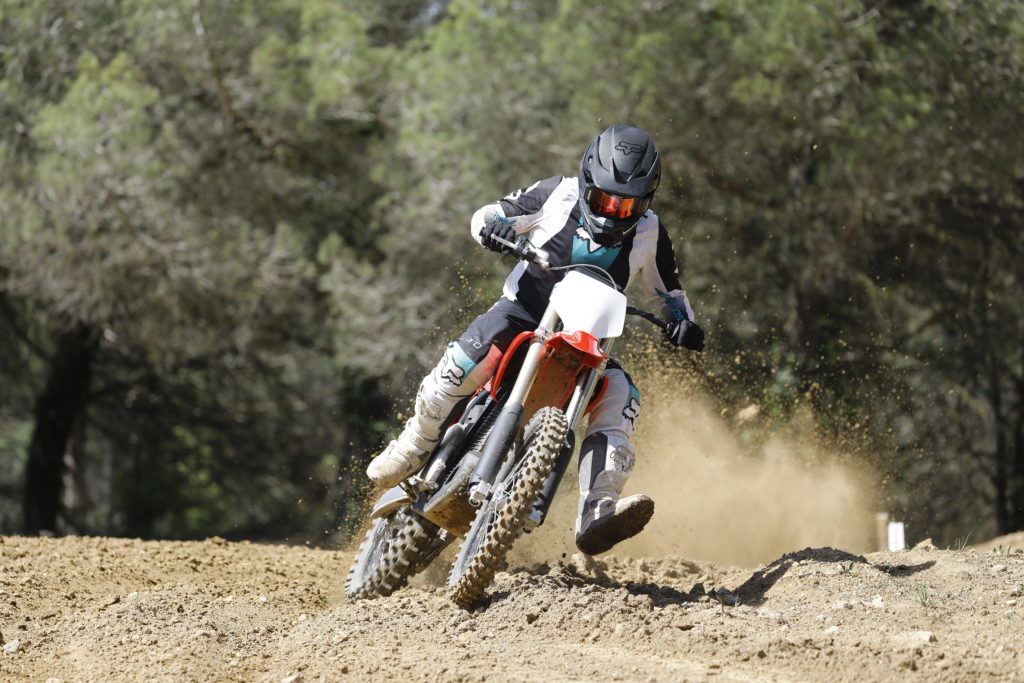
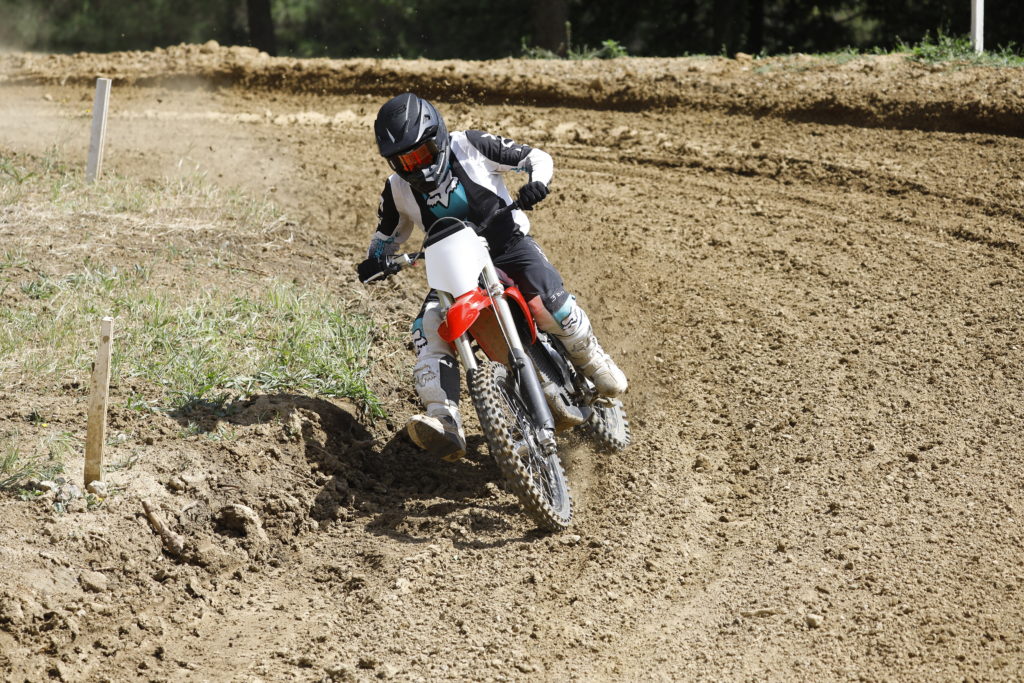
So, what sort of impact is the Stark likely to have on the MX market and motorcycle industry in general, and when do you think that will happen?
In short, I reckon it’ll have a significant and disruptive impact, which will be felt almost immediately – barring any major hurdles that Stark may encounter between now and when they start delivery of the production machines in October, or significant early-adopter consumer feedback that battery range falls well short of claimed figures. For some time now, electric-powered dirt bikes have generally been regarded as little more than an interesting window into a likely future, albeit some years away from stealing serious sales from conventional, fossil-fuel burning machines. But the market’s reaction to the Stark Varg makes you think an electric-powered MX bike revolution is suddenly a lot closer than we all previously thought. A mainstream shift toward electric is likely to be a five-year-plus transition, but given the Stark’s user-friendly performance, it’ll surely have the major manufacturers scrambling to develop their own electric-powered MXers. And don’t be surprised if Stark’s success attracts other out-of-industry players to join the e-fray.
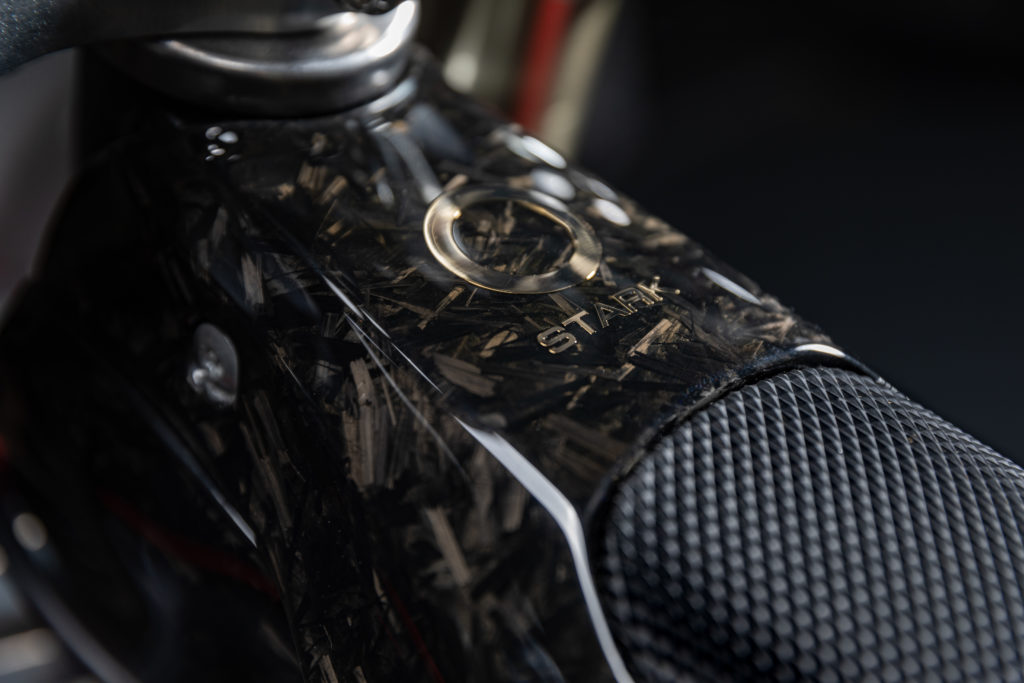
What excites me most about the appearance of the Stark Varg is the likelihood that it’ll help keep threatened tracks and riding areas open, and introduce more people to the sport by making it less intimidating. I mean, just look at the make-up of those who’ve ponied up with a deposit on a Stark. I know a bunch of people who’ve never contemplated buying an MX bike before – guys and girls with an MTB or other action sports backgrounds – but who happily laid down their cash on a Stark Varg. Reinforcing that anecdotal evidence is the fact that 40% of the first 11,000 deposits on the Stark have opted for an 18-inch rear wheel and sidestand. In other words, the Stark is appealing to a much wider demographic than hardcore MXers.
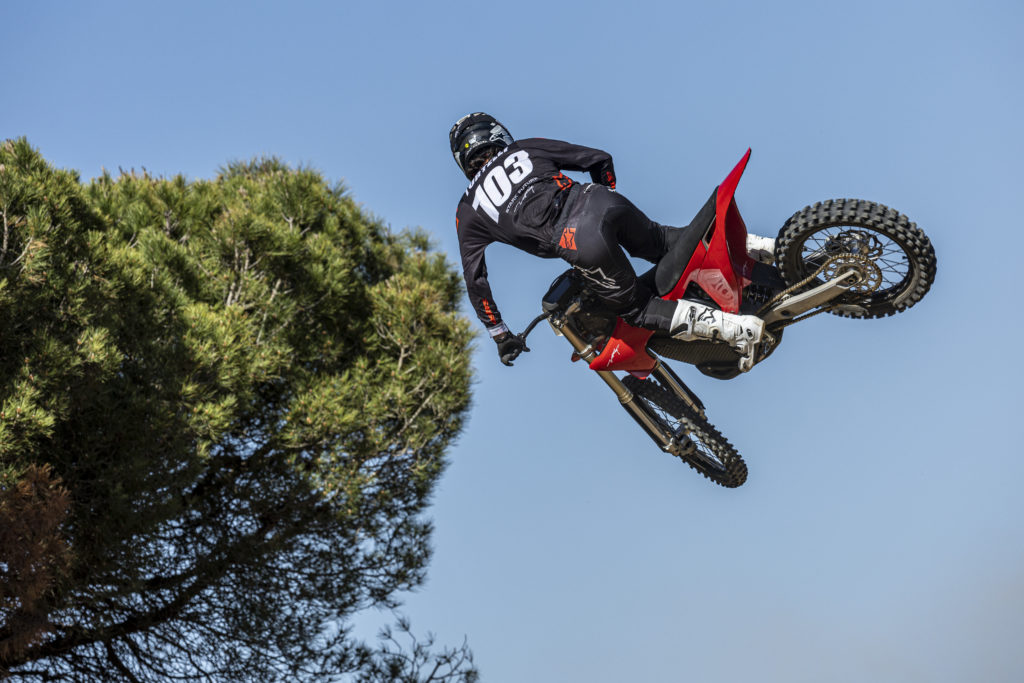
Perhaps long-time USA-based moto journo, Swap Moto’s Donn Maeda, summed things up best with this analogy: “Man, back in the day with film cameras, there was only a handful of good photographers. But when digital cameras arrived, they were so much easier to use, and everyone became a decent photographer overnight. That made it harder for the good guys to differentiate themselves, but it also meant that a lot more people got involved with photography and enjoyed the process. I think the Stark Varg is going to have the same revolutionary affect on the motocross market. It will level the playing field bigtime. Which has got to be a good thing, right?”
Let’s give the final word to Stark Future’s CEO, Anton Wass: “First, we’re going to make Stark the market leader in motocross, and that’s going to happen quite fast. Our second ambition is to sell a million motorcycles per year, and that will take a few years. While doing that, we will also be focused on technical developments and looking at selling technology to other companies”.
No, you can’t accuse the Stark lads of being half-hearted about this project!
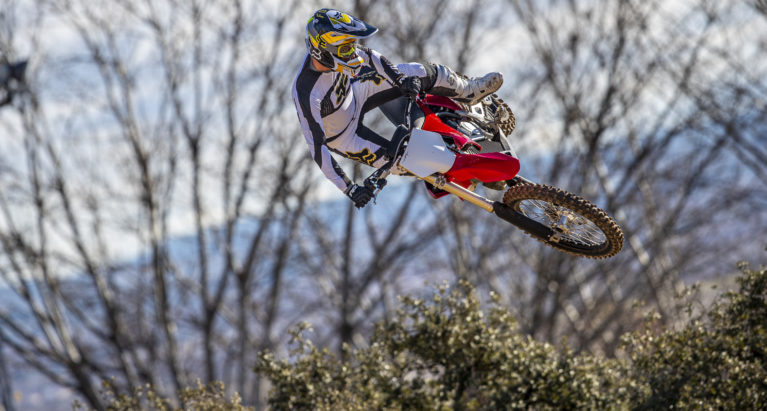





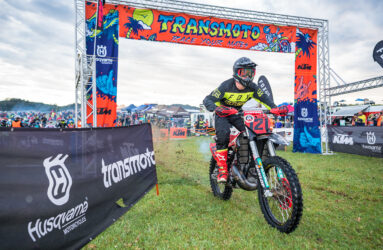


Be the first to comment...